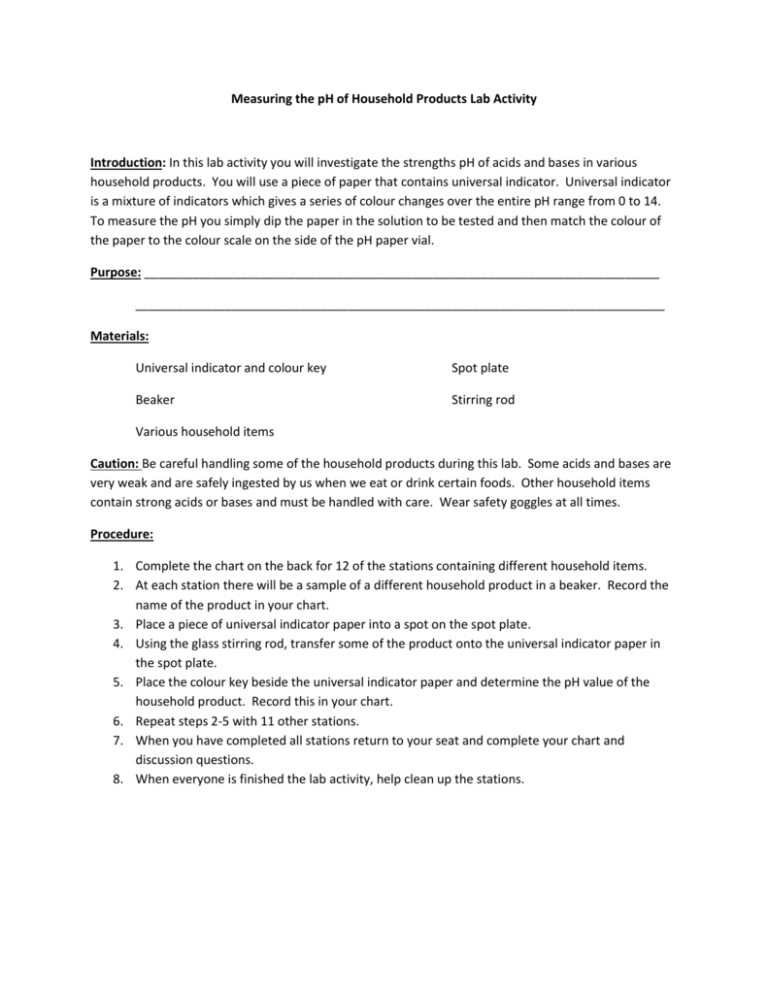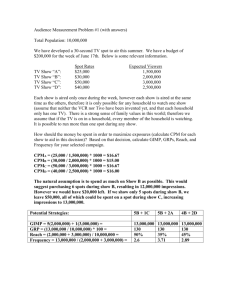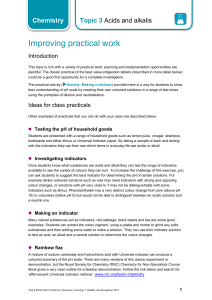Day 003- pH Household Lab
advertisement

Measuring the pH of Household Products Lab Activity Introduction: In this lab activity you will investigate the strengths pH of acids and bases in various household products. You will use a piece of paper that contains universal indicator. Universal indicator is a mixture of indicators which gives a series of colour changes over the entire pH range from 0 to 14. To measure the pH you simply dip the paper in the solution to be tested and then match the colour of the paper to the colour scale on the side of the pH paper vial. Purpose: ___________________________________________________________________________ _____________________________________________________________________________ Materials: Universal indicator and colour key Spot plate Beaker Stirring rod Various household items Caution: Be careful handling some of the household products during this lab. Some acids and bases are very weak and are safely ingested by us when we eat or drink certain foods. Other household items contain strong acids or bases and must be handled with care. Wear safety goggles at all times. Procedure: 1. Complete the chart on the back for 12 of the stations containing different household items. 2. At each station there will be a sample of a different household product in a beaker. Record the name of the product in your chart. 3. Place a piece of universal indicator paper into a spot on the spot plate. 4. Using the glass stirring rod, transfer some of the product onto the universal indicator paper in the spot plate. 5. Place the colour key beside the universal indicator paper and determine the pH value of the household product. Record this in your chart. 6. Repeat steps 2-5 with 11 other stations. 7. When you have completed all stations return to your seat and complete your chart and discussion questions. 8. When everyone is finished the lab activity, help clean up the stations. Observation Chart: Name of Product pH Classification (acid/base) Safety Information 1. 2. 3. 4. 5. 6. 7. 8. 9. 10. 11. 12. Discussion Questions 1. Write the list of products from most acidic to most basic. 2. What are common uses of bases? 3. What are common uses of acids? 4. Which are more dangerous in your home, acids or bases? Defend your answer with evidence from the safety labels you saw during this lab.











